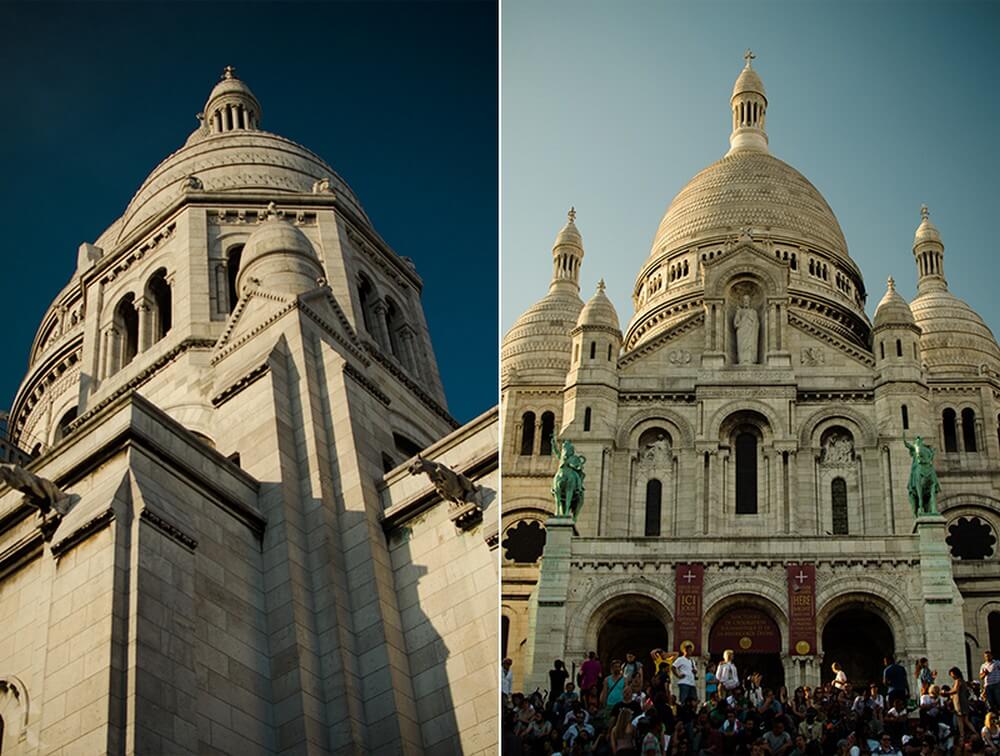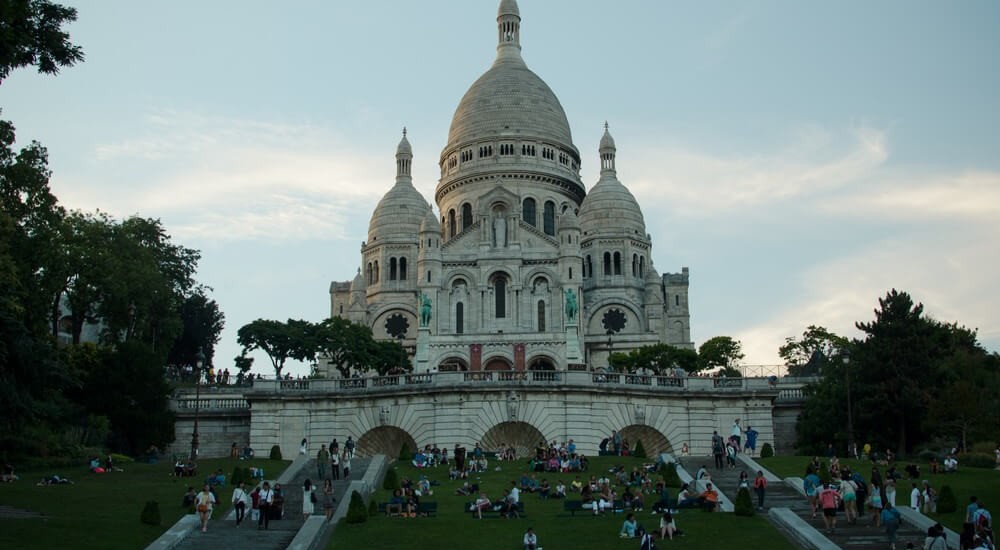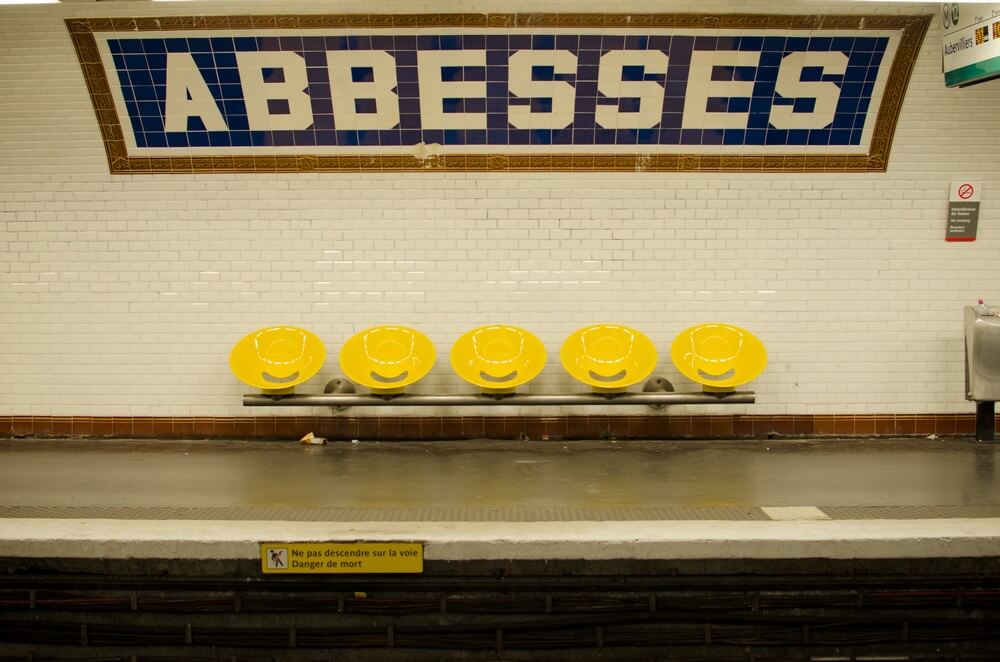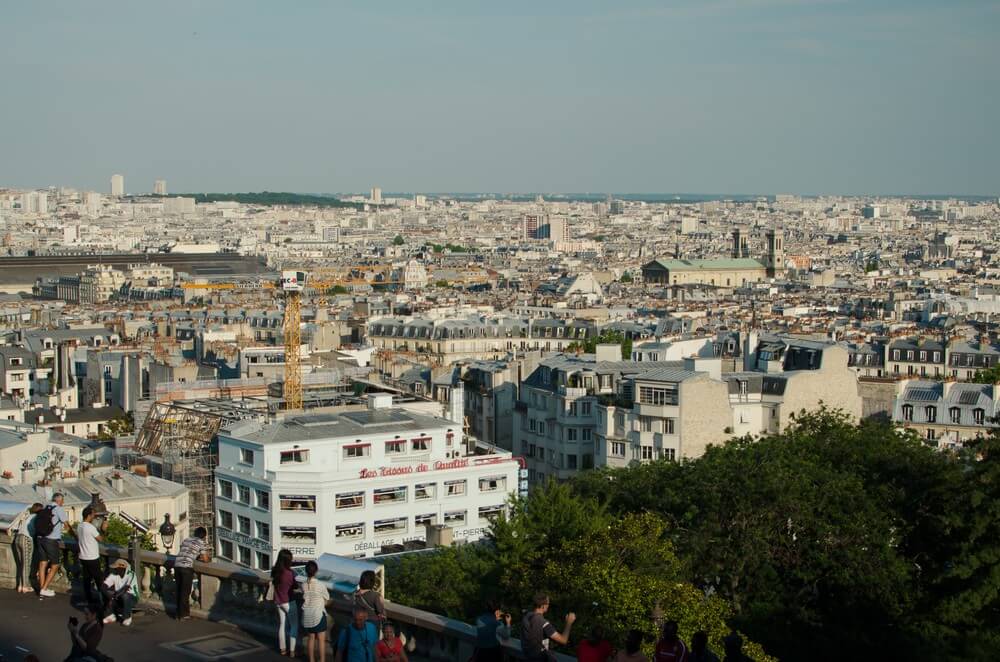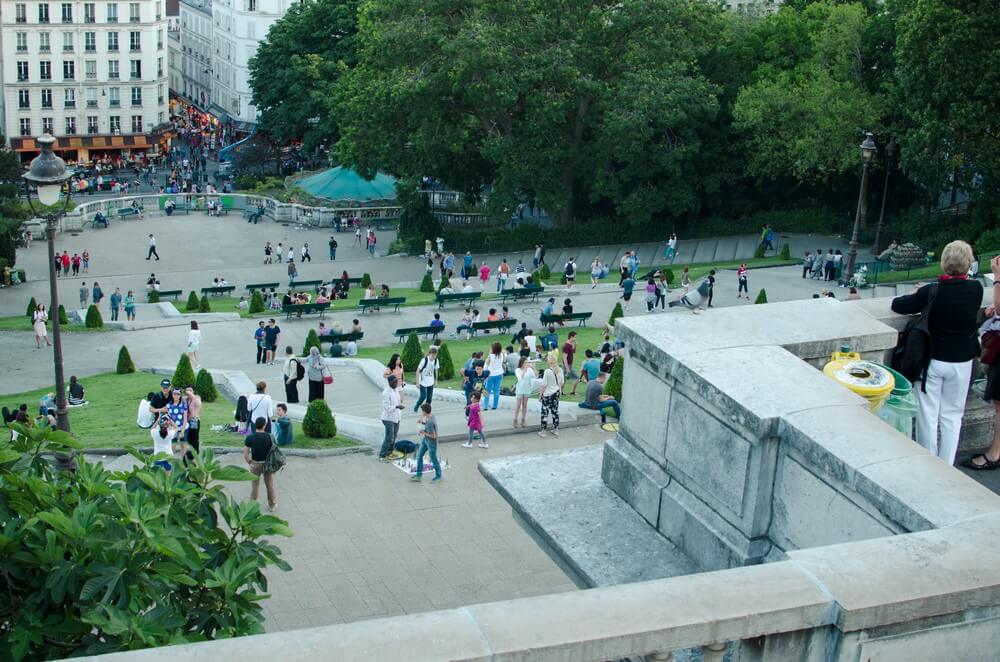The full name of this well-known landmark is… The Basilica of the Sacred Heart of Paris (the Sacred Heart part of it refers to Jesus’ heart). A little further out of the way than most of the central attractions in Paris, this popular Catholic church is situated at the highest point of Montmarte in the 18th arrondissement. Receiving millions and millions of visitors each year, Sacré-Coeur is the second most visited church in Paris after Notre Dame.
When I visited the church it was later afternoon and buzzing with tourists and locals sitting on the steps enjoying the magnificent view of the rest of Paris. Despite the queues, the inside of the church was quiet and had a massive pipe organ as well as the usual churchy interior with interesting mosaics, symbols and details. The grounds are quite spacious and the lawns stretch all the way down the hill in front of the church; perfect for a sunset picnic. And a picnic was had, indeed (with Gangsters Paradise playing on someone’s speakers in the background). It was one of my favourite memories of Paris: the real-life modern mixed-up kind of Paris rather than the romantic-traditional-expected version of it.
Cool facts about Sacré-Coeur
• You might be surprised to know that the church is in fact quite new. Construction was completed in 1914 and the building was consecrated after World War 1 in 1919.
• The style that the church is built in could be refered to Romanesque-Byzantine.
• The basilica’s garden has a fountain.
• You can go up to the top of the dome and get an even better view of the city!
• Because the dome is built on a hill, it’s the second highest point in Paris after the Eiffel Tower.
What you need to know
When vising the church, it’s important to remember to dress well and cover as not to distract praying visitors. For this reason, photography is also not allowed inside the church. Entrance is free but it can get really busy. Bear in mind that the area is very steep so bring comfortable shoes. You can get really close to the church if you take the metro to Abbesses. After that it’s just a ten minute uphill walk.
Another Church to Visit in Montmarte
One of the oldest churches in Paris is in the same neighbourhood. Saint-Pierre de Montmarte has a bit of strange out-of-place look to it (perhaps resulting from the architectural influences). Adding to the interest are the Roman columns are used in the nave. Unfortunately the church was destroyed during the French Revolution and had to be rebuilt a few years later.
What else is in Montemarte
A city vineyard
In terms of city scapes, this is crazy, but very French. There’s a small vineyard in Montemarte! You can find it in Rue Saint-Vincent. This tiny space produces about 500 litres of wine a year.
A boho artsy history
If you’re an art-lover (I bet you are, Paris is for artists) then you’ll know for sure that Paris used to be a boho hangout for artists that are world famous today. Just by being in Montmarte you’ll be sharing historical space with the likes of Picasso, Monet, Renoir, Toulouse-Lautrec, Pissarro and even Van Gogh! Word on the street is that Renoir used to live at 12 rue Cortot and that Les Demoiselles d’Avignon was painted by Picasso while he was living in The Boat-Wash House (Le Bateau-Lavoir) with other artists.
If you’re a fan of Renoir, you can visit the Musée de Montemarte where he used to live. Other artists such as Suzanne Valadon and Maurice Utrillo used to live there too. If you’re more into surrealism than impressionism, you’ll be pleased to know that Espace Dali is right nearby too (see it on Google Maps). The museum focuses more on Salvador Dali’s sculptures and engravings rather than paintings. Tickets are €11.50 for adults and children under 8 enter free. Right next door are two galleries: Galerie Dalí and Galerie Montmartre. The latter focuses on the art of contemporary artists.
Nightlife
Then there’s the night life. Lapin Agile is a famous cabaret that used to be frequented by many of the artists, like Picasso, living in the neighbourhood. Find it on Rue des Saules over here. Picasso painted a painting named after this cabaret in 1905 with himself as the foremost character.
Moulin Rouge, a world-famous cabaret marked with a red windmill, was similarly visited by a boho crowd back in the day. Surprisingly this is where the can-can dance originated – something you might have guessed from popular culture – which I still find surprising since it feels more American than European. The cabaret also put on other acts such as circus entertainment, comedy and later operetta.
In terms of art history, the Moulin Rouge was made famous in part by the beautiful posters created for the cabaret by Toulouse-Latrec. La Goulue was his first such poster, painted in 1891.
The original establishment actually burnt down in 1915 but was rebuilt six years later and continued to host famous guests in the entertainment industry and politics for years to come after the Second World War. Le Moulin Rouge went on to celebrate its 125th anniversary in 2014! Today, you can visit the Moulin Rouge today for dinner and a show for about €200. Or you could just check it out from the outside.
Well, now! I feel like I’ve given you a pretty accurate run down of what you can see and do in this colourful part of town and really look forward to hearing more about what treasures you might find in the artistic heart of Paris!
